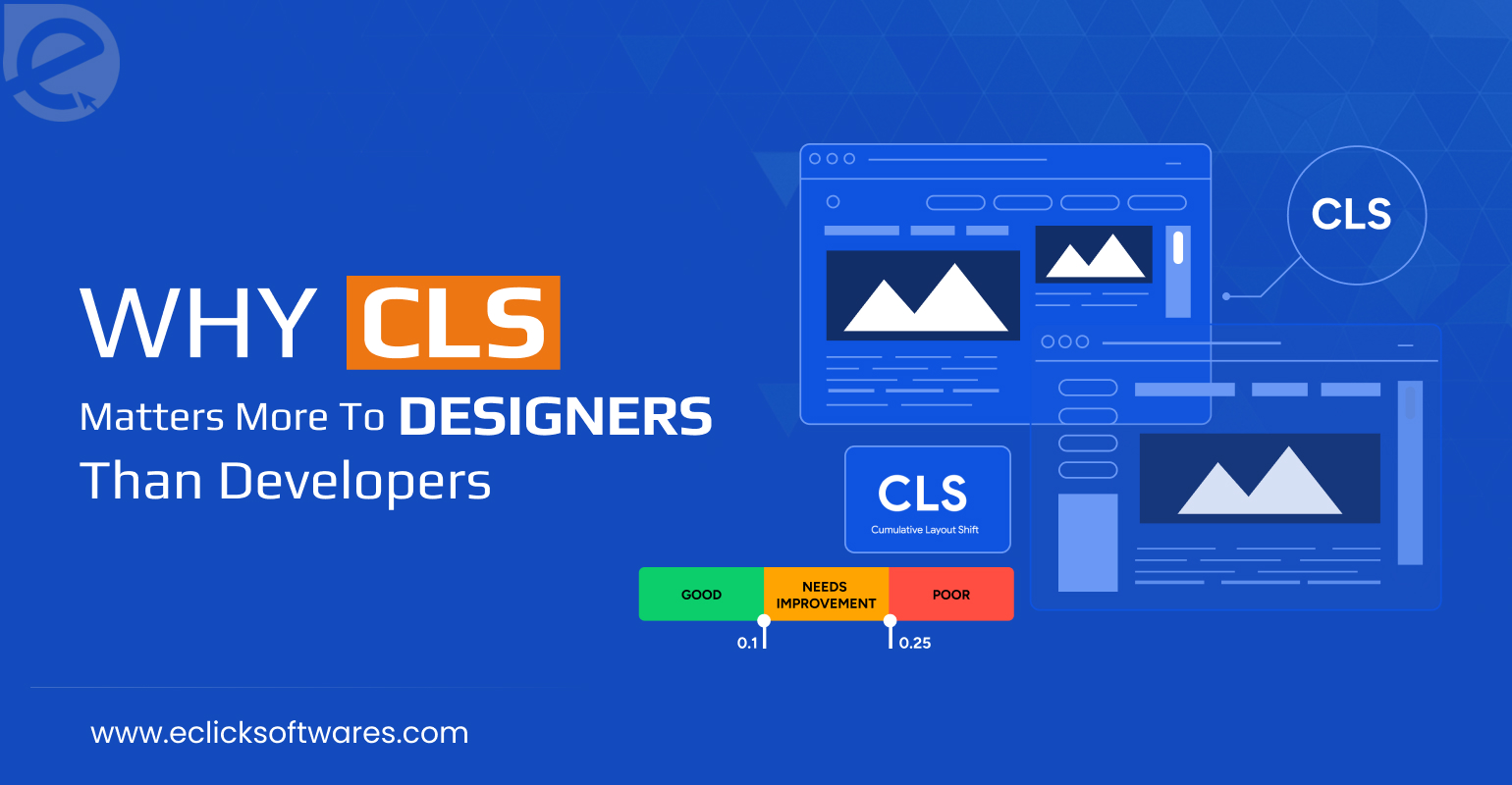
We Develop Websites Keeping Marketing in Mind
How To Write SEO-Friendly Blog Posts For Converting Readers?
 Apr. 10, 2025, 12:00 AM
Apr. 10, 2025, 12:00 AM- By Eclick Softwares and Solutions

SEO-friendly blog posts are written to fulfil search intent by providing satisfactory answers to a user's query. The informative, trustworthy content is helpful and engaging and written for people to provide value to readers. Optimized SEO-friendly content ranks well in the SERPs for targeted queries which the audience uses to search for a business's products and services.
Optimized SEO-friendly content is the way to go for a sustainable, cost-effective marketing strategy because it helps the website to appear in front of audiences. Even the search engines better understand the content. It helps in increasing the website's chances of coming to the top of search results, which brings in more website traffic, raises brand awareness and ultimately converts more potential customers which further increases your ROI.
A Complete Set of Tips To Get Started With Writing SEO-Friendly Blog Posts
With search engines evolving, SEO-friendly blog posts have become more than only keyword insertion or basic optimization. A winning SEO strategy should have user intent as the focus along with valuable, optimized blog content ranking well on SERPs and converting audiences.
1. Begin With Keyword Research: Focus on Keyword or Seed Keyword
The target keyword or the phrases that the potential customers use for searching should be the first focus. Using the keyword research tools, relevant keywords and phrases can be identified and target keywords listed which are to be used throughout the blog post. Relevant and easy-to-read text is a bonus!
Moreover, researching and identifying the competitor's keywords that are most effectively targeted proves useful. These relevant keywords are to be added to the blog post - in the title, tags, body and metadata, for the website to rank higher in SERPs.
2. Conduct SERP Analysis
Through SERP analysis, the content most relevant to the user's intent can be identified. Studying the top-ranking websites for a particular phrase or keywords helps to find how the websites are ranking and how content is appearing to search engines. An integral part of creating SEO briefs and doing on-page optimization is a SERP analysis.
3. Creating an Optimized Title Aligning With the Search Intent
High-quality texts are to be used for title tags since they are important for SEO and people see them first while searching for information. The title tags should accurately describe the page's content. Matching the title tags to the page's content as well as to the user's intent further helps the search engines understand the title tags.
4. Creating Outline With Keywords and NLP Terms Included
Organized thoughts and ideas serve as the outlines for writing the blog posts. Include the keywords and terms related to marketing and SEO. So, create a keyword-rich outline with natural language processing (NLP) SEo terms included.
Keep the outlines engaging and fun to read. For your blog to stand out from the rest, emphasize the writing style and personality.
5. Make a Comprehensive Outline that Competes With the Ranking Pages
In your outline, include all the relevant information to create an informative and captivating SEO-friendly blog post. To improve the clarity of blog post outlines, focus on the main points to be covered in the article. Emphasize the related keywords and NLP terms to improve the blog post's relevance.
6. Come Up With A Meta Description Summarizing the Blog Post’s Outline
A short summary text within 155-160 characters with the post's main keyword, appearing on search engine results pages is the meta description. Meta descriptions are helpful in improving click-through rates (CTR) on SERPs. A good meta description accurately reflects the page's content and entices the users to click through to the website.
7. Create One Top-Level Heading or H1 Tag and Target the Seed Keywords
When you write blog posts, use only one H1 tag - a catchy headline including the keyword. It is helpful to draw readers in and give them a better sense of what the post is talking about.
Even it's a good practice to include the target keywords where possible in the headings. But not stuffed - It does more harm than good! Focus on creating clear and concise headings while incorporating the appropriate keywords.
8. Write Short, Interesting Readable Paragraphs
Keep the paragraphs short and point, for the blog post to be SEO-friendly. Concise paragraphs make reading easier for the audience because the post does not look bulky.
For easy viewing on mobile devices, try limiting the paragraphs to 2 - 3 sentences. Keep the important words and phrases in the blog and italics to draw attention. For readers to quickly scan your content, use lists. Even write in simple and clear language so the readers can understand the point.
9. Do Research and Write the Best Content
To clearly answer your audiences' questions, first do your research clearly. In addition, be focused on one or two related questions per article for the blog post to get the best chance to rank well in SERPs.
Conduct in-depth research as quickly as possible to create better content compared to the competitors.
10. Write Engaging Content To Hook the Readers
Determine the purpose your blog post will serve. Think about what the readers will do after reading, and then write engaging content. To help the readers to understand the point, use a short introduction.
Break down the story into manageable chunks, and include the keywords and phrases the readers are looking for in the content. Use short paragraphs, lists and bullets to highlight key points.
Even the images and screenshots help in illustrating what is meant. In the end, embed the relevant videos after the introduction to get even more engagement.
11. Add Illustrations And Examples As Many As Possible
Your blog post will become more SEO-friendly when illustrations and examples are added. Along with being placeholders, these even add value to the posts. Furnish the content with as many helpful images, videos, infographics and examples for helping the users.
It makes the blog posts more informative and useful for readers, that in turn helps in improving the blog posts' ranking on search engines.
12. Content Optimization For Images
Images make content more engaging and more visually appealing. Nevertheless, the images should be optimized for SEO, since these contribute to the overall ranking of your article in Google search results.
Optimizing the new and existing content, and including the keywords as alt text increases the better search exposure.
To optimize an image for SEO, keep these in mind:
- The image file name should include the relevant keywords to help Google index the image correctly and associate it with the article.
- A compressed file format like JPEG or PNG should be chosen to maintain quick loading. The blog post might drop in ranking because of slow loading times.
- Re-sized images are the appropriate size for web use. Large images slow down loading times.
These simple tips help ensure the images are helpful other than hindering the SEO performance of blog posts.
13. Adding Internal and External Links
A blog post's ranking will increase in search results when it is linked to other blog posts or to the internal pages. Adding a few links to each blog post is a good practice. For the visitors to further explore the website, the links should be set to open in new tabs.
Readers get more information and references when the blog post is linked to external sites.
Both internal and external linking boosts a blog post’s credibility and improves its rank in search results.
Add CTAs to each post to link it to the next content topic. From the CTAs, the readers will easily find the information they are looking for.
14. Blog Post Optimization for Content Depth and Length
Content depth and length are the key factors in blog post optimization. While the search engines prefer the shorter blog posts, readers might find them underwhelming. Long and interesting blog posts hold on the readers till the last word.
15. Blog Post Optimization for NLP Terms
Judiciously use the focus keywords for the content to be more appealing to readers and Google. Overusing the keywords will cause reading difficulties, and would result in lower rankings. So, better to use synonyms and NLP terms throughout the blog post to improve the content's Google ranking.
16. Answering A Lot of Questions and Optimizing “People Also Ask”
Use Google to find the questions that people are asking about your chosen topic. Find and copy the top 10 questions in the "People Also Ask" section of the search results. At the end of the page, add a FAQ section with these questions. Answer each one within one or two lines.
A blend of technical optimization and engaging content makes SEO-friendly blog posts effectively convert readers. Focusing on thorough keyword research, structuring posts with clear headings and subheadings, and incorporating meta descriptions encouraging clicks will significantly boost a blog post's performance. Blog posts should be continuously updated with content to keep it relevant and aligned with changing search intent. Through this approach, the blog remains valuable, retains the content freshness and shows good performance in search engine rankings. SEO is all about driving traffic, meaningfully engaging them and ultimately converting them. Optimized, high-conversion blogs better resonate with the audience and help in achieving business goals.
Related Blog
- By Eclick Softwares and Solutions
- November 21, 2025
10 Surprising Benefits of ...
Chatbots for websites deliver 10 hidden benefits. Enjoy 24/7 ...
Read More- By Eclick Softwares and Solutions
- November 13, 2025
How CLS Impacts Design Mo ...
Know why CLS holds greater weight for designers than develop ...
Read MoreSearch Blog...
Recent Posts
Eclick Services







